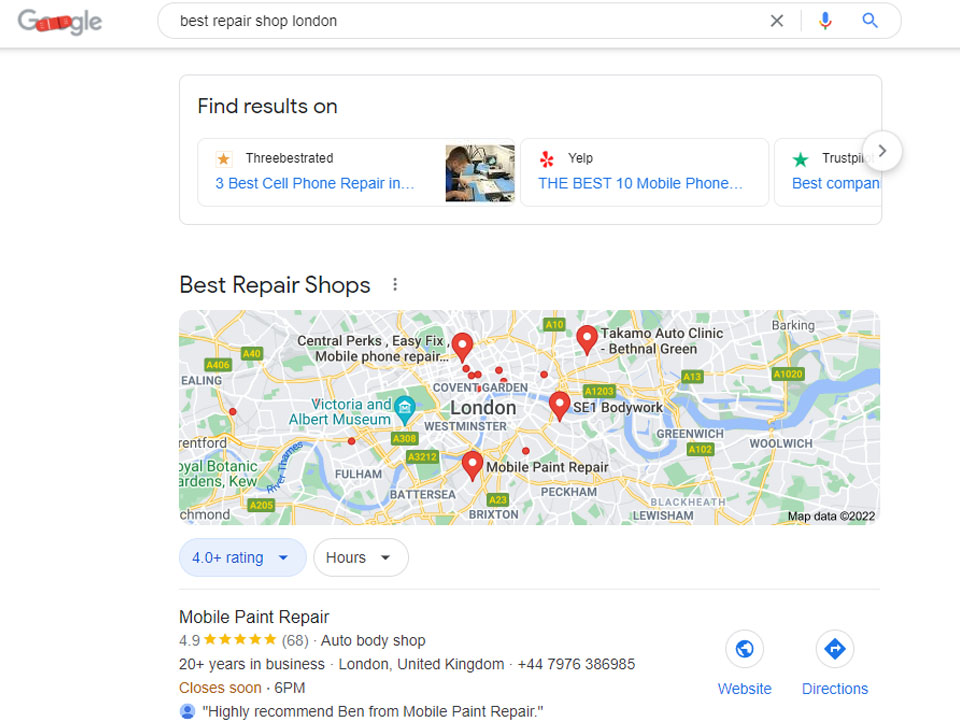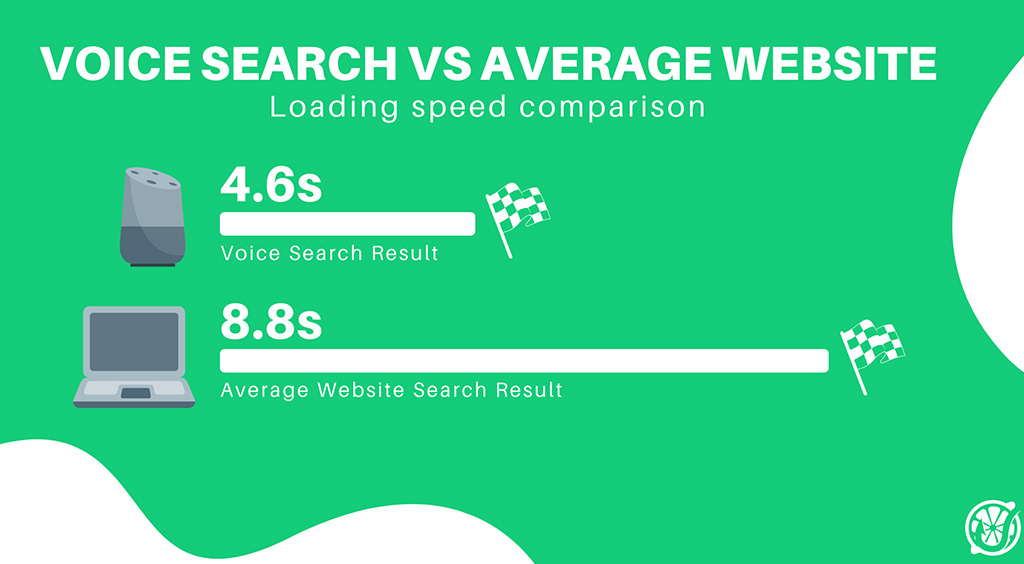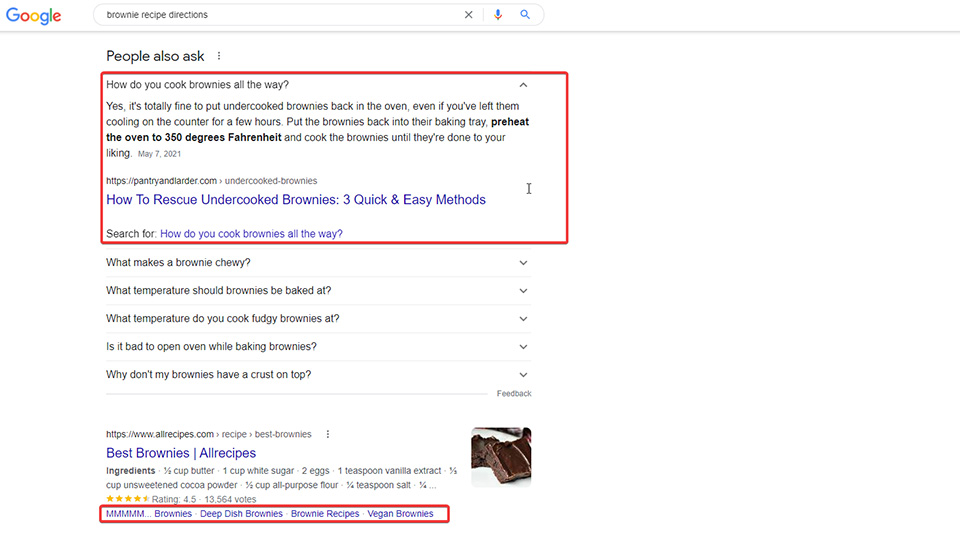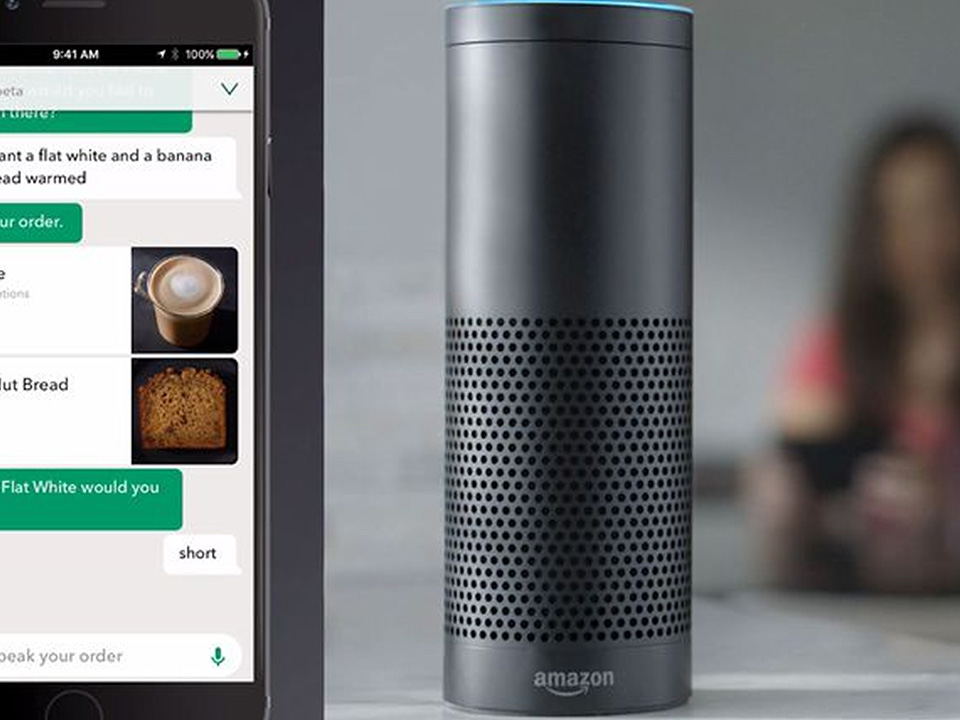
Back in the day’s voice search technology didn’t look that sexy, and if someone saw a person speaking loudly into his wrist they thought he is crazy.
However, with the risen popularity of smart devices such as smart speakers or smartwatches. And the increased demand for faster, safer, and hands-free search technology especially during the COVID-19 time. Voice search technology quickly became the next big thing everyone suddenly cares about.
In fact, according to the research, 32% of customers are interested in hands-free technology that would limit the touch surfaces they interact.
And no, voice search is no longer the same technology that used to be decades ago, slow and hard to interact with. These days, on average a voice search query loads in 4.6s, while a normal page takes around 8.8 seconds to loads. That’s almost as twice as fast!
So without a doubt, voice search technology is in high demand and it shouldn’t be ignored while optimizing your business, especially your website’s SEO.
However, the next thing would be to ask, where should I start optimizing for voice search? Or even what’s the difference between normal SEO website optimization and the one for voice search?
Hence, today we’ll cover where you should start optimizing for voice search, how the technology works and why it’s different from the normal search? Why you should start optimizing for it today, and what are the simple 7 steps to optimize your business for voice?
So without further a due let’s dive deep into this topic and let’s start with the technology behind the voice search.
Voice Search Optimization
What’s voice search and why it’s different?
To better understand the voice search, it’s best to start with the technology and how it’s made. And as it was mentioned earlier, voice search technology isn’t some new thing and has been around for quite a long-time.
The first device that supported voice search and was used for similar purposes was IBM Shoebox which was created back in 1961.
Since then technology has evolved almost unrecognizably, but we don’t need to understand every single bit of how it’s made. And it’s sufficient to understand the basics of how it works.
First of all, voice search technology is powered by A.I. that helps to understand the voice search and interpret the customer’s intent. So that it can return the most relevant results for our specific search query.
For instance, if a person going out for dinner asks Alexa, “Do I still going to make it to the bus leaving at 17:45?”. The A.I. powered tool will interpret the user’s intent and suggest the best route to reach the bus stop in the shortest time or will suggest different alternatives you could take to make it on time.
So voice search is the process that allows users to simply search information online by using their voice instead of typing.
How does it work?
The voice search process works in 4 different phases that all undergo when a voice search query is performed:
- First of all, it filters out the sound and separates the search query from other background noises
- Second, it turns received sound waves into digital data, a process better known as digitizing
- Then it undergoes the voice analysis and processes the analyzed data
- Lastly, it compares the received query to other search queries in the database for pattern recognition
In addition, it’s not a secret that one of the most powerful ASR (Automatic Speech Recognition) tools belongs to Google. And just think for a second how many daily voice search quarries it collects from all of its devices and feeds their AI-powered technology that’s only getting better each day at voice recognition.
And today’s voice recognition technology is so powerful that can easily distinguish even the slightest difference between accents or intonations. It’s said that it can transform voice queries into text with up to 95% of accuracy.
Lastly, many different models and computation techniques are used to recognize voice search and transform it into text. And one of the most commonly used methods is natural language processing or better known as NLP.
Why you should optimize for voice?
To begin with, one of the biggest motivators optimizing for voice search is its rapidly growing popularity. Especially the younger generation so often using it. Though, you can also see the growing popularity of voice search among older generations too. In fact, according to Google 41% of adults and 55% of teens use voice search daily at least once.
6 Out of 10 Google Home or Amazon Echo owners say they can’t imagine themselves going back and stop using their smart speaker.
What’s even more interesting, 76% of all smart speaker owners use local voice search to order something online at least once.
And you might ask, but what does it have to do with me, and why I should care about optimizing for voice?
In short, every year comes out more and more new devices that support voice technology and this way contributes to the future of smart homes.
Just think about your robot vacuum cleaner, Nest thermostat, smart light bulbs, or smart fridge. Each of these devices can work together interchangeably and be connected to a single central system you can control directly from your smart speaker at home.
For example, let’s assume that we’re running a small dairy store somewhere downtown. Seeing the latest trends and rising popularity of voice search we decide to optimize our website for voice search. This way people could easily order dairy products from their own home comfort by simply speaking into their smart speaker devices. And just think for a second, how much time will you save for your business and your customers.
7 Simple steps to optimize for voice search
So by now, it should be clear that voice search isn’t some new technology that it’s yet to come, and it’s actually a big thing right now. Thus, if you didn’t start optimizing for voice search yet, now it’s the right time.
On the other hand, you might ask. What’s the difference between optimizing your website’s SEO for normal browsing and for voice search?
Well, optimizing for voice search takes a slightly different approach than optimizing for the web. In fact, optimizing for the voice we must think differently over our customer’s intent, the way we do keywords research, how we structure our content, and many more.
To make this process easier we share a simple 7 steps process while optimizing your website for voice search.
1. Consider the users intent
Similar to optimizing your site for normal browsing, while optimizing for voice it’s crucial to think over the customer’s search intent.
Are they looking for more information on a subject, or they are already ready to make a purchase?
There are 4 primary user intents to consider:
- Informational – question-based intent, such as who, what, where, when, how, and why
- Navigational – a specific direction to a website or a local search location
- Commercial – these queries include products review and content that compares different brands
- Transactional – often product or service-specific and has intent to buy the product
To better understand users’ intent, Google suggests targeting users’ micro-moments. These are short time frame windows when the users are ready to act and actively looking for more information, to buy or try something.
In addition, these are the moment’s users are interested in your brand the most and they’re ready to spend money to get your product right now.

(Google micro-moments | Pedestal Search Blog)
To target micro-moments, it’s important to choose the right keywords strategy, the ones leading to the high-commitment moments.
These search terms include keywords such as “statistics”, “directions”, “procedures”, “shopping” and many more. After you’ll decide which micro-moment you want to target, the next step is simple, do your keywords research and optimize your content with the new terms.
2. Target conversational keywords
Voice search is different from a normal browser in the way users search. Voice search queries are usually more in a conversational tone and consist of longtail keywords.
Just think for a second, when you look up something online you simply type in your search in 3 to 4 keywords. And when you’re searching via voice, your queries tend to be much longer and resemble more of the conversation speaking tone.
To expand more on this, once we look up the “best repair shop in London” on Google, our search term is short and right to the point. We don’t write full sentences and simply use the most important keywords.

However, if we look up for the same search, this time via the voice search, our search term is much longer and reminds us of conversational speaking tone, “what is the best repair shop in London?”

What’s even more interesting, is that 70% of all voice search terms are done in a natural and conversational tone.
Hence, while optimizing your content for voice search it’s important to think over your keywords, make them longer, and think more of a conversational tone. This way think about our keywords more as questions rather than simple search terms.
Another interesting study was done on keywords length and found out that the text-based queries were shorter than voice searches. On avarage 2 words. Meaning that most of our typical search terms are robotic and short.
On the other hand, the more successful voice search terms only start from 3 words while searching. This proves that our keywords for voice search tend to be much longer than the normal search terms.

(How voice search will change the marketing? | Moz Blog)
Thus, optimizing your content for voice search think more in terms of longer, more conversation types of keywords.
3. Optimize Website Load times
It’s a known fact that a website’s load speed influences the site’s bounce rate. Hence, slow loading pages can be detrimental to your page traffic and your overall SEO health.
However, does the page load time has the same influence on voice search?
Well, first of all, we should think about why we use voice search instead of typing. In most cases, we use voice search to save time and get quicker results. Which means that if your site is already running slow, it will rank even lower for the voice search queries. Because for voice search it matters more the loading speed than for normal browsing.
In fact, according to Backlinko research, it takes 2 times faster to load a page using voice search, rather than to load it on an average webpage. 4.6 seconds and 8.8 seconds respectively.

Hence, we should never skip a step of optimizing our website’s load speed, and fix every small issue that can give us an extra millisecond to improve our loading times.
And don’t forget to optimize your website to run faster on mobile devices. Build them using AMP, utilize the website’s caching, compress files, and uploaded images.
4. Optimize for Local Search
According to a study on our search habits, 58% of all the U.S. participants said that they’ve used voice search to find local businesses. Thus this shows how important it’s to optimize your business for local search if we want that our website would rank higher for voice.
One of the ways to get started is to claim your business presence on Google My Business. That’s your business profile that helps people looking for a particular product or service in the desired location. Let’s say someone is looking for a repair shop in London. As the result, if you’ve claimed your listing on Google My Business, you’ve got a chance that your business will appear among other search results.
As a result, to provide the best experience, make sure to update your business profile with the most relevant information. Add your company’s logo, location, phone number, working hours, and a short description of your services. This way customers will be able to pull up more information about your business and the services you sell.
5. Optimize Schema Markup
When Google spiders crawl your website to understand its content sometimes it might have trouble understanding it. However, using Schema markup better known as structured data you can optimize your content with more rich data that directly speaks to Google spiders and shares more information about your website.
Typically it comes in a short HTML code you can use to mark important parts within your site and tell the search engines what’s important to remember.
Using Schema markup you can optimize your content for different content types such as:
- Articles
- Events
- People
- Products
- Organizations
- Reviews
- Recipes
- Local Businesses
Also, this way you can optimize your content for voice search, marking specific content parts with special markups that tell Google they’re optimized for voice.

6. Build FAQ pages
When people look for information online they usually start searching by asking different questions. Most common questions start with “What”, “Who”, “When”, “How”, “Where”, and “Why”?
That’s why, when you want to optimize your content for voice search it’s useful to create FAQ pages.
And these pages will serve as your company’s encyclopedia that will help customers to answer the most commonly asked questions in simple language. Also, you can use schema markups here too, to enrich your content and make it more understandable for search engines.
To get a better sense of how important FAQs are, Backlinko find out that 2,68% of all voice search results come from FAQ pages.
7. Keep healthy website’s SEO
Lastly, when optimizing your content for voice search it’s important to keep the rest of your site’s SEO healthy. In fact, the higher your page will rank, the better chances it’ll have to become the answer for a particular voice search.
To keep healthy SEO consider:
- Optimizing your website’s speed
- Make website’s content mobile-friendly
- Use AMP to speed up your website
- Ensure your website is protected with HTTPS protocol. In fact, 70.4% of all Google Home search results are protected
- Build your domain authority. According to Backlinko, the average page ranking for voice search has a domain authority of 76.8. This means search engines pull data only from trusted and verified sources
- Ensure that your web pages are indexed and easy for Google to crawl. To test your website’s indexability use Google Search Console.
Bonus Point
3 Brands that mastered the voice search marketing
Optimizing for voice search same as normal browsing is a continuous process. And with each new test, you find something new, change it and try something else.
And once you run out of creativity, take inspiration from brands that successfully optimize for voice search. Get some new ideas on what to try next.
Hence, let’s look at 3 brands that successfully optimized for voice search and what we can learn from them.
1. Domino’s
Domino’s pizza optimizes its processes at the highest standards and does everything that it would be really easy to order pizza from anyplace.
Customers can easily order pizza using voice from their smart speakers such as Google Home, Alexa, or Siri. And their end goal is clear, to optimize content for the best purchasing experience from the first question, to the last delivery processes.
So far customers can easily order pizza via text app Slack, Messenger, Twitter, or using voice search commands directly from your smart speakers.
The easier they make the shopping experience, the more enjoyable it’s, the more money they’ll earn for the business. This being beneficial both for the customers and the business itself.

2. Amazon
It’s not a secret that Amazon has one of the biggest resources to voice shopping data. Which allows them to provide one of the best shopping experiences without people leaving their homes.
Customers can easily connect their Amazon apps to Alexa, this way research, select, and execute orders seamlessly without any troubles.
To give a better sense, think of the situation when one evening you cook delicious Italian pasta for your family. You ask Alexa to tell you the recipe, what products you’ll need, and once you notice that you’re soon running out of parmesan cheese, you can easily re-order it directly from Amazon Fresh. Which makes the shopping experience seamless.
As the result, this smooth shopping experience connecting to all Amazon ecosystems allows you to easily reorder repeating purchases. This way saving time for more important tasks and responsibilities such as spending time with your family members.
3. Starbucks
Lastly, Starbucks successfully implements voice search functionality within their processes and allows customers easy and seamlessly interact with their business.
Through the Starbucks Reorder voice app, people can seamlessly reorder their “usual” coffee from one of the last 10 stores they’ve visited. In addition, using voice commands they can easily check their loyalty card balance and switch between their previous orders.

Conclusion
To summarize, voice search isn’t some next big thing and it’s already a tremendous technology. Hence, if you haven’t started yet optimizing your business for voice search, now it’s time. Before it’s too late.
There’s a reason why the voice search industry is forecasted to triple by the year 2026 and reach 27.16 billion U.S. dollars. As the result, you don’t want to be the last business to jump in into this already fast pace moving train.
And no, you don’t have to know exactly how the voice search technology works. Though, the general understanding of the processes and what it takes to show you a voice search quarry is useful.
That will help you to get a better understanding of the technology, its importance, and why you should optimize for it.
In addition, optimizing for voice search is a continuous process, but by following these 7 simple steps, you’ll make this process much easier:
- Think of the user’s intent
- Target long-tail conversational keywords
- Optimize website’s loading speed
- Optimize for local voice search
- Use structured data
- Build FAQ pages
- Keep the overall website’s SEO healthy
And I’m sure if you’ll follow these simple steps your website will be ready for voice search.
Lastly, if you run out of ideas what to try next, check the biggest brands such as Domino’s, Amazon, or Starbucks and how they optimize for voice. It’s no surprise that these brands have massive marketing budgets and always will try to stay on top of the game of digital marketing. This way trying out the latest trends and optimization techniques.




